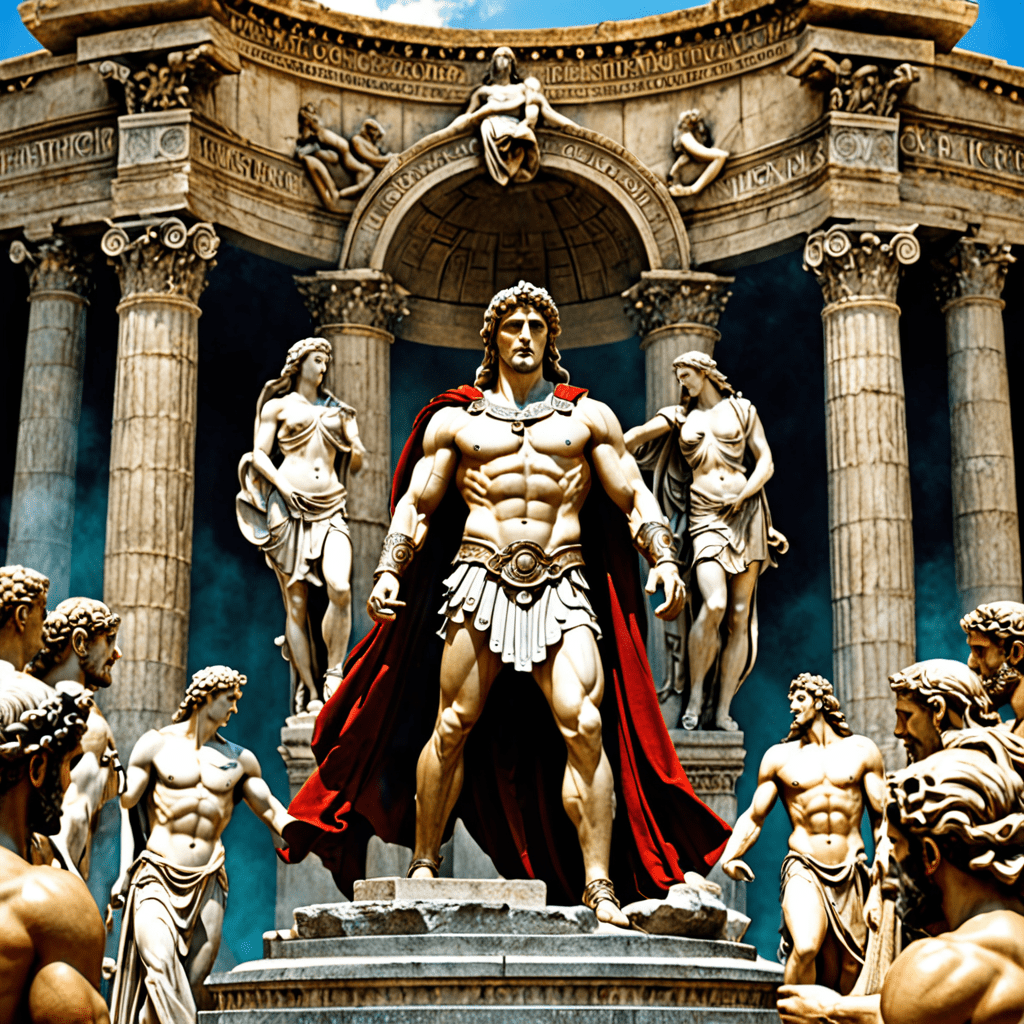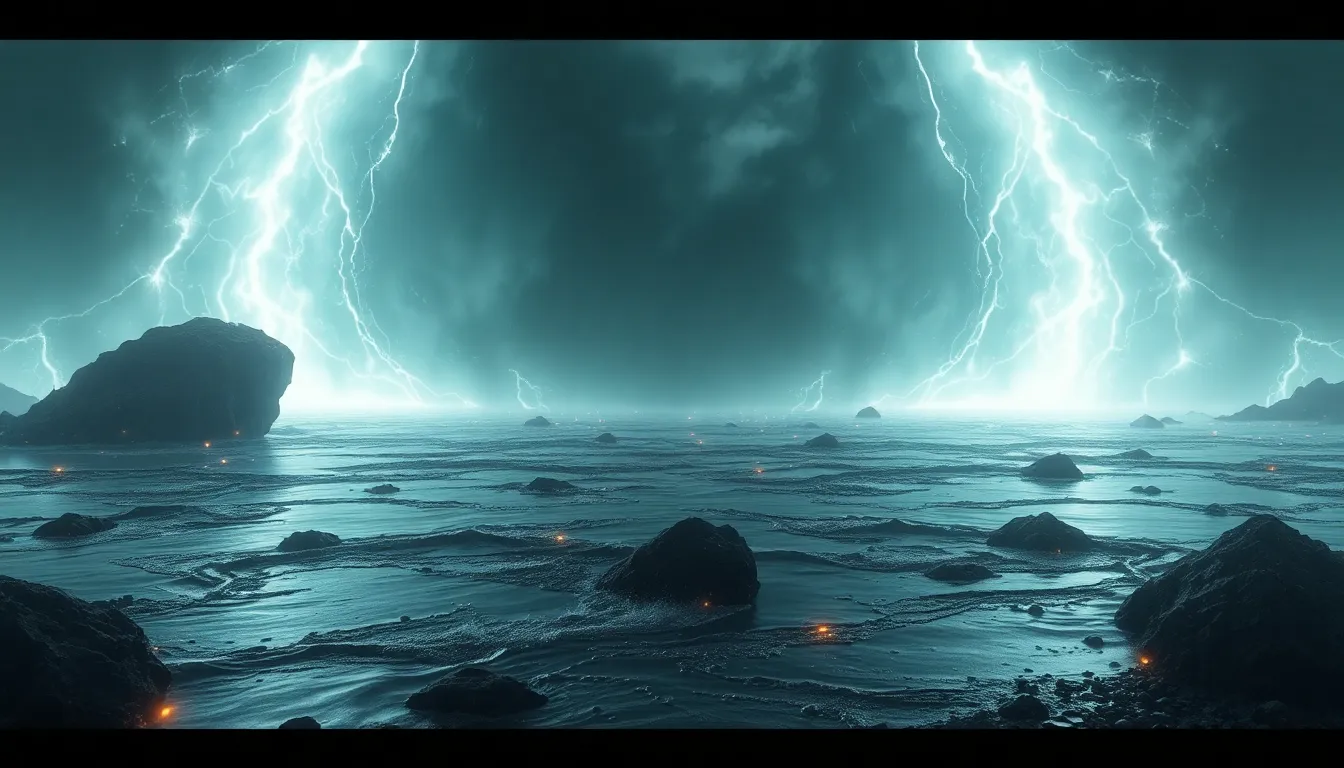Underworld Myths: The Dark Tales That Captivate the Imagination
Introduction to Underworld Myths
Underworld myths are fascinating narratives that explore the realm of the dead, serving as gateways to understanding human fears and beliefs about mortality. These tales exist in every culture, often depicting an afterlife that is both alluring and terrifying. The significance of underworld myths lies not only in their storytelling but also in their ability to reflect the values, fears, and aspirations of the societies that birthed them.
Common themes in these myths include the journey of the soul, the trials faced in the afterlife, and the figures that govern these realms. They often portray a duality of punishment and reward, offering insight into how ancient peoples viewed death and the afterlife.
Historical Context of Underworld Myths
The origins of underworld myths can be traced back to the earliest civilizations. From the ancient Egyptians to the Greeks, these narratives evolved alongside human understanding of life and death. The myths served multiple purposes, including explaining natural phenomena, imparting moral lessons, and providing comfort regarding the unknown of death.
In ancient cultures, mythology was a crucial means of understanding the universe. By examining these tales, we gain insight into the spiritual beliefs and societal structures of civilizations long gone, revealing how they grappled with existential questions.
Cultural Variations of the Underworld
Underworld myths vary significantly across cultures, yet many share commonalities in their depiction of the afterlife. Here’s a brief overview of some major cultural perspectives:
- Greek Mythology: The Greek underworld, ruled by Hades, is a complex realm where souls are judged and sent to various destinations such as Elysium or Tartarus.
- Egyptian Mythology: The Egyptians believed in a detailed afterlife journey, where the heart of the deceased was weighed against the feather of Ma’at to determine their fate.
- Norse Mythology: The Norse depicted the afterlife as a place of valor and honor, with Valhalla for warriors and Hel for those who did not die in battle.
- Aztec Mythology: The Aztecs viewed the afterlife as a journey through various realms, influenced by how one died, with Mictlan being the destination for most souls.
These variations highlight unique beliefs about the afterlife while also showcasing universal themes of judgment, reward, and punishment.
Key Figures of the Underworld
Many deities and spirits inhabit the underworld across different mythologies, each embodying specific roles and symbolism:
- Hades: The Greek god of the underworld, Hades governs the dead and signifies both fear and respect for the afterlife.
- Osiris: In Egyptian mythology, Osiris represents resurrection and the afterlife, overseeing the judgment of souls.
- Hel: In Norse tradition, Hel is the goddess who rules over the realm of the same name, where those who died of illness or old age reside.
These figures are not merely rulers of the dead; they also serve as symbols of the complex relationship between life and death, embodying both dread and the promise of transformation.
The Journey to the Underworld
The journey to the underworld is a common narrative thread in many myths, often depicted as a perilous voyage filled with trials and tribulations. This journey frequently symbolizes:
- Death: The transition from the physical world to the afterlife.
- Rebirth: The potential for renewal and transformation through trials faced in the underworld.
- Transformation: The journey as a metaphor for personal growth and understanding of one’s own mortality.
Such narratives often compel protagonists to confront their deepest fears, ultimately leading to a greater understanding of life and death.
Moral Lessons and Cultural Reflections
Underworld myths are rich with moral and ethical lessons. They often reflect societal values concerning death, justice, and the afterlife:
- Justice: Many myths emphasize the importance of living a virtuous life to secure a favorable afterlife.
- Fear of the Unknown: They address human anxieties about death and what lies beyond, providing a framework for understanding mortality.
- Redemption: Some tales offer the possibility of redemption and transformation, suggesting that one’s fate can change through courage or virtue.
These stories serve not only as cautionary tales but also as reflections of the cultures that created them, highlighting shared human concerns about morality and existence.
Underworld Myths in Modern Literature and Pop Culture
The influence of ancient underworld myths continues to permeate modern literature, movies, and art. Contemporary adaptations often reinterpret these themes for new audiences. Examples include:
- Dante’s Inferno: A literary exploration of the afterlife, heavily influenced by classical mythology.
- Films like “The Matrix”: Which incorporate the theme of a journey through different realities, akin to a descent into the underworld.
- Graphic Novels: Such as Neil Gaiman’s “The Sandman,” which frequently references mythological figures and themes related to death and the afterlife.
These modern interpretations breathe new life into ancient tales, illustrating their ongoing relevance and adaptability.
Psychological and Archetypal Interpretations
Psychological theories, particularly Jungian archetypes, offer a unique lens through which to interpret underworld myths. The underworld often symbolizes:
- The Unconscious: Representing the hidden depths of the mind where fears and desires reside.
- Shadow Self: A concept representing the darker aspects of personality that one must confront.
- Transformation: The journey into the underworld as a path to self-discovery and personal growth.
Understanding these myths through a psychological framework reveals the profound connection between mythology and the human psyche.
The Role of Women in Underworld Myths
Women often play significant roles in underworld myths, serving as both powerful figures and symbols of duality:
- Persephone: In Greek mythology, her abduction by Hades and subsequent return to the surface symbolizes the cycle of life and death.
- Isis: In Egyptian mythology, she embodies resurrection and the nurturing aspects of afterlife beliefs.
- Hel: The Norse goddess who rules over the dead, represents the inevitability of death and the acceptance of fate.
The portrayal of these women often reflects societal views on femininity, mortality, and power, indicating the complex role of gender in mythological narratives.
Conclusion: The Enduring Fascination with Underworld Myths
Underworld myths captivate the imagination with their rich narratives and profound lessons about life and death. From ancient civilizations to contemporary storytelling, these tales continue to resonate with human experiences and fears. They encourage us to confront our mortality, explore the depths of our psyche, and reflect on our values and beliefs regarding the afterlife.
As we navigate our own journeys through life, the allure of the underworld remains a powerful reminder of the mysteries that lie beyond—and the eternal human quest for understanding the unknown.




